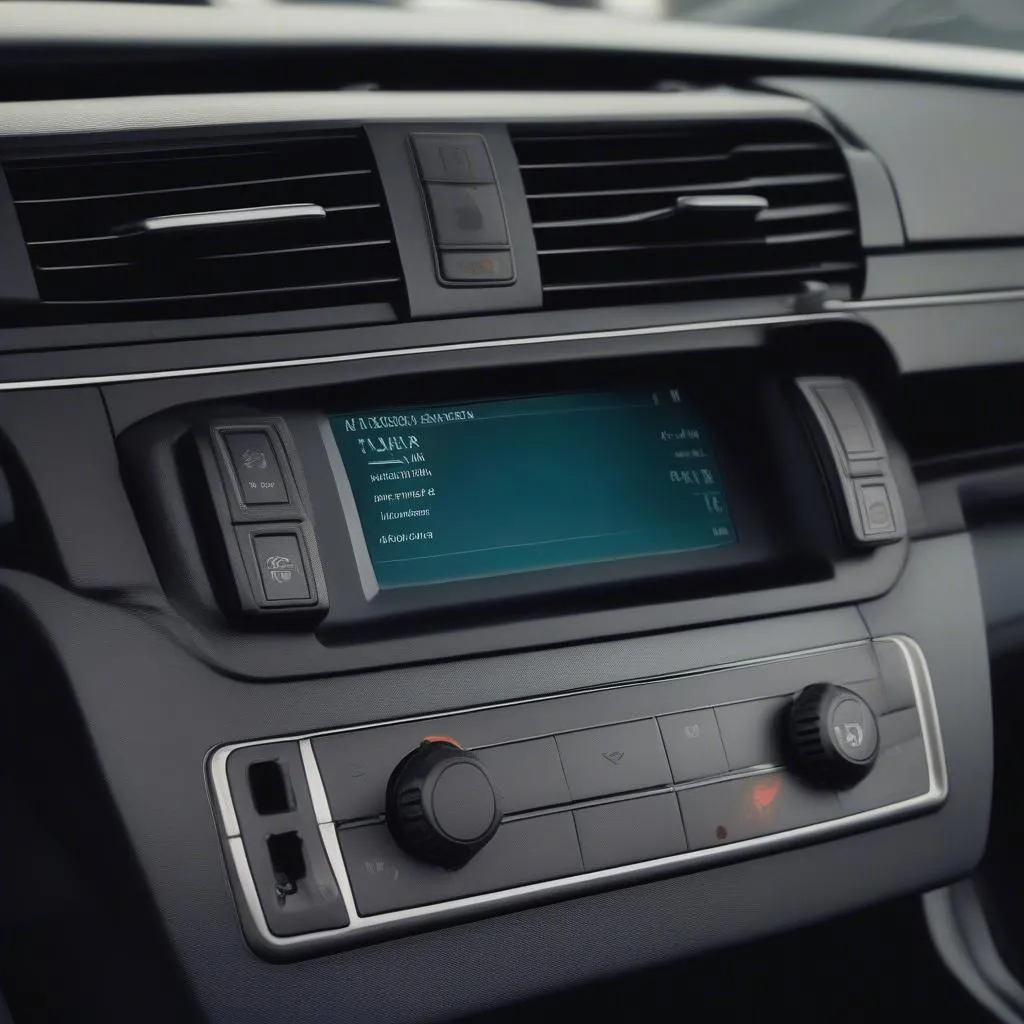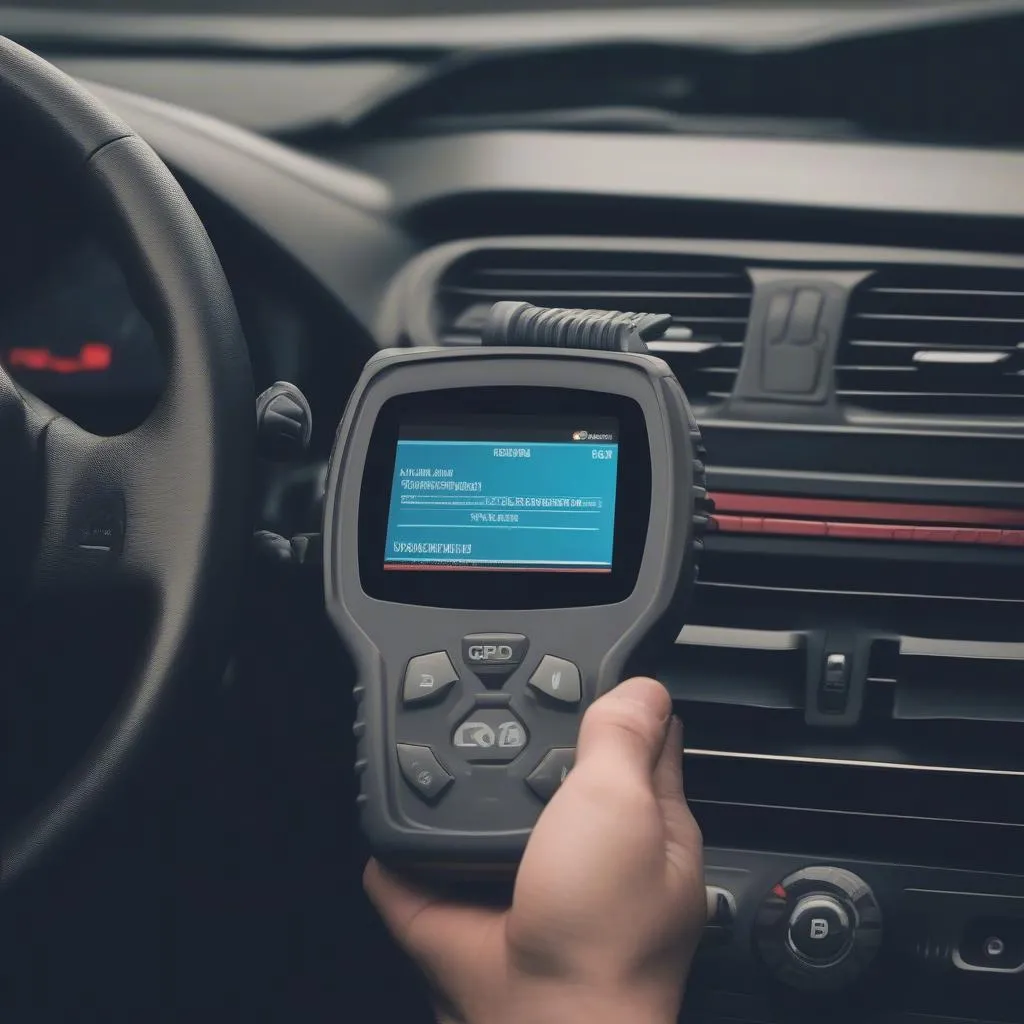Have you ever wondered where the OBD port is on your BMW E46? Or maybe you’ve encountered issues with your car’s diagnostics and are unsure how to troubleshoot them. Well, you’re not alone. Finding the OBD port and understanding how it works is crucial for any E46 owner, whether you’re a seasoned mechanic or a casual DIY enthusiast.
In this article, we’ll dive deep into the world of the E46 Obd Port, exploring its location, function, common issues, and how to diagnose and resolve them.
What is an OBD Port and Why is it Important?
The OBD (On-Board Diagnostics) port is a standardized connector found in most modern cars. It acts as a gateway to your vehicle’s electronic systems, allowing you to access crucial information about its performance, diagnose potential problems, and even reprogram certain settings. Think of it as your car’s “black box” that stores vital data and provides insights into its health.
Understanding the E46 Obd Port
The BMW E46, known for its sporty handling and refined luxury, utilizes an OBD II port, which conforms to the international standard. This port is typically located under the dashboard on the driver’s side, near the steering column. It’s easily recognizable by its 16-pin rectangular shape.
E46 Obd Port Location: Where to Find It?
The E46 OBD port’s location may vary slightly depending on the model year and trim level. However, it’s generally situated in the following areas:
- Under the dashboard on the driver’s side: This is the most common location, usually near the steering column, within easy reach.
- Under the hood: In some E46 models, the OBD port might be located under the hood, near the engine compartment.
Tip: If you can’t find the port, consult your owner’s manual or refer to online resources like the TechCarUSA website for model-specific information.
Why is the E46 Obd Port Important?
The OBD port plays a vital role in maintaining and troubleshooting your E46. It allows you to:
- Diagnose engine problems: OBD tools can read diagnostic trouble codes (DTCs), providing valuable information about potential issues with your engine.
- Monitor real-time data: You can use OBD scanners to monitor various parameters like engine speed, fuel pressure, and more, providing real-time insights into your car’s health.
- Clear trouble codes: After addressing an issue, you can use an OBD tool to clear the corresponding DTC from the system.
- Reprogram certain settings: In some cases, OBD tools can be used to reprogram specific settings, such as adjusting the throttle response or customizing the instrument cluster display.
 BMW E46 OBD Port Location
BMW E46 OBD Port Location
Common E46 Obd Port Issues
While the OBD port is typically reliable, it can sometimes experience issues that hinder diagnostics or communication with your car. Here are some common problems:
- Damaged or corroded connector: Over time, the OBD port can become damaged due to wear and tear, dirt accumulation, or corrosion. This can prevent the scanner from establishing a proper connection.
- Loose wiring: The wiring connecting the OBD port to the car’s ECU (Engine Control Unit) can become loose, resulting in intermittent or no connection.
- Faulty ECU: In rare cases, a faulty ECU can prevent the OBD port from functioning properly.
- OBD port not working: A very common problem is the OBD port not working. This could be due to a number of factors.
Troubleshooting E46 Obd Port Issues:
- Inspect the connector: Start by visually inspecting the OBD port for any signs of damage, corrosion, or debris. Clean any dirt or rust with a small brush and a contact cleaner if necessary.
- Check the wiring: Inspect the wiring connected to the OBD port for any loose connections or signs of damage. Ensure all wires are securely fastened and free from any breaks or tears.
- Test with a different scanner: If you’ve already tried cleaning the connector and checking the wiring, it’s a good idea to test the OBD port with a different scanner to rule out any issues with your current tool.
Pro Tip: If you’re not confident troubleshooting OBD port problems on your own, consider seeking help from a professional mechanic.
Using OBD Scanners for E46 Diagnostics:
OBD scanners are essential tools for E46 owners. They allow you to access and interpret the information stored in the car’s ECU, helping you diagnose problems, monitor performance, and even reprogram certain settings.
Types of OBD Scanners:
- Basic Code Readers: These are the most affordable scanners and can read and clear trouble codes. They’re a good starting point for basic diagnostics.
- Advanced Scanners: These scanners offer more features, such as live data monitoring, graphing, and advanced diagnostics.
- Dealer-Level Scanners: These are the most comprehensive scanners, providing access to all the same diagnostic capabilities as a dealership mechanic. They’re often used by professional mechanics but are also available for purchase by consumers.
What to Look for in an E46 OBD Scanner:
When choosing an OBD scanner, consider these factors:
- Compatibility: Ensure the scanner is compatible with your E46 model year.
- Features: Determine the specific features you need, such as live data monitoring, graphing, and advanced diagnostics.
- Ease of use: Select a scanner with an intuitive interface and clear instructions.
- Price: Set a budget and choose a scanner that offers the best value for your needs.
Choosing the Right OBD Scanner for Your E46
There are many excellent OBD scanners available for the E46. The “Dealer Scanner For European Cars” is a great option for those looking for a comprehensive and versatile scanner.
Pro Tip: Look for a scanner that is specifically designed for European cars, as it will be more likely to support all the diagnostic functions needed for your E46.
Beyond the OBD Port: Understanding E46 Diagnostics
The OBD port provides a window into your E46’s electronic systems, but it’s just one piece of the puzzle. To understand the full scope of diagnostics, you need to familiarize yourself with the various components and systems involved.
E46 Electronic Systems:
- Engine Control Unit (ECU): The ECU is the brain of your car, controlling and monitoring various engine functions.
- Transmission Control Module (TCM): The TCM manages your E46’s transmission, ensuring smooth gear changes and optimal performance.
- Body Control Module (BCM): The BCM controls various body functions, including lights, windows, and door locks.
- ABS Control Module: The ABS control module manages the anti-lock braking system, ensuring optimal braking performance.
- Airbag Control Module: The airbag control module manages the safety system, deploying the airbags in case of a collision.
E46 Diagnostic Tools and Resources:
- BMW TIS (Technical Information System): BMW’s official online service and repair information platform offers detailed technical information about the E46, including diagnostic procedures and troubleshooting guides.
- E46 Forums: Online forums dedicated to the E46 provide a platform for enthusiasts and mechanics to share knowledge, ask questions, and troubleshoot problems.
E46 Obd Port: A Gateway to Enhanced Performance and Longevity
By understanding the OBD port’s functionality, troubleshooting common issues, and utilizing appropriate OBD scanners, you can gain valuable insights into your E46’s health and performance. Remember, keeping your E46’s electronic systems in top shape is essential for ensuring its long-term reliability and delivering the driving experience you deserve.
Pro Tip: Regularly scan your E46 with an OBD scanner to identify and address any potential issues before they become major problems.
 OBD Scanner for BMW E46
OBD Scanner for BMW E46
Need Help with Your E46?
If you’re experiencing OBD port issues or need assistance with E46 diagnostics, contact us today! We’re here to help you navigate the complexities of E46 diagnostics and ensure your car is running at its best.
Contact Us: Whatsapp: +84767531508